What Is Stones?
Important Point
Stones, encompassing various stone types and types of stones and rocks, form one of the most important building materials in civil engineering.
Stones are derived from rocks, w
hich form the earth’s crust and have no definite shape or chemical combination but are mixtures of two or more minerals. In stone masonry in places where it is naturally available.
Types of Stones Used for Building Constructions
Here, the different types of stones and its uses are as follows.
1. Granite
Granite, a type of stone known for its durability, is one of the most commonly utilized building stones. Granite is popular because of its hardness and durability, even though it is no longer the most commonly used building stone.
It’s a deep-seated igneous rock with a crystalline structure and fine to coarse grain. Because of its crushing strength, this stone is extremely precious. It can also tolerate extreme weathering.
Granite stones are usually cut into slabs and then polished. It can then be used for stone-facing slabs as well as floor slabs. The issue with granite is that stone has a low fire resistance.
It is, nevertheless, ideal for use in construction since it is resistant to acidic liquids such as curds, vinegar, and lime juice. Granite is hence suitable for kitchen tabletops.
Advantages of Granite
Here, the pros of granite are as follows.
- Durability and toughness.
- Erosion resistance
- It’s possible to utilize it as a floor covering.
- This stone can survive harsh weather conditions due to its exceptional hardness.
- Granite is a beautiful stone with a sophisticated appearance.
- It has high impact resistance and is difficult to break.
Disadvantages of Granite
Here, the cons of granite are as follows.
- The price is high, as is the expense of installation.
- Granite installation takes a long time because of the behind-the-scenes stone mortaring process and time-consuming mortar adhesion.
- In situations with x-ray or gamma radiation or magnetic fields, radioactive wave radiation can grow.
Applications of Granite
The different area’s use of granite is as follows.
- Cabinets and kitchen countertops,
- Floor covering,
- Cobblestones,
- Curbstones, stairs, and building external façade.
Also, read: What Is a Bar Bending Schedule | Preparation as Per Bs 4466 | Tolerances as Per Bs 4466
Useful Article for You
- What Is a Contour Interval
- What Is Tile
- What Is the Difference Between a Shower Pan and a Shower Base?
- What Is a Window Panel
- Type of Arch
- What Is the Measurement for a Queen Size Bed
- What Is Considered Livable Space
- What Is One Way You Can Save Electricity?
- What Is a Bundle of Shingles
- What Is a Gallon of Water Weigh
- What Is Sand Blasting
- What Is a Span Bridge
- What Is the Little Black Diamond on a Tape Measure
- What Is a Louvered Door
- What Is a Spread Footing
- What Is Leveling
- Different Types of Beam
- What Is Pedestal
- What Is Plumbing Fixtures
- What Is Slab Construction
- What Is Calacatta Quartz
- What Is Auxiliary View
- Sheepsfoot Roller
- Pier in Construction
- What Is 1 Flight of Stairs
- What Is Refractory Cement
- Dry Pack Concrete
- What Is Luminous Flux Vs Lumens
- What Is a Frost Wall
- What Is an Undercoat
- What Is Road Pavement
- Arch Foundation
- What Is a Stair Landing
- What Is a Spandrel Beam
- What Is Pier and Beam Foundation
- What Is a Pile Cap
- What Is a Mat Foundation
- Types of Gravity Dam
- What Is a Floating Slab
- What Is the Purpose of Foundation
- What Is a Flush Door
- What Is Residential Construction
- What Is the Best Foundation for a House
- What Is a Benchmark in Surveying
- What Is a Engineering Drawing
- What Is an Admixture
- What Is the Standard Size Water Supply Line
- What Is the Difference Between Tension and Compression?
- What Is a Tremie
- What Is Tributary Area
- What Is Shoring Construction
- What Is a Cason
- What Is Wall Putty
- What Is the Difference Between Mortar and Concrete
- What Is Bhk
- What Is Sbc of Soil
- What Is Plinth Level
- What Is Water Proofing
- What Is Mix Design of Concrete
- What Is Fine Aggregate
- What Is Retention Money
- What Is Design Mix
- What Is Isometric Scale
- What Is Development Length
- What Is Superelevation
- What Is Wall Made Of
- What Is Micro Piling
- What Is Soil Stack
- What Is a Half Wall Called
- What Is Flagstone
- What Is a Cinder Block
- What Is Floors
- What Is a Parapet in Construction
- What Is Concept Drawing
- What Is a 30 Degree Angle
- What Is a Mezzanine Level
- What Is Plinth Area
- What Is Precipitation
- What Is a Soffit
- What Is the Difference Between Residual and Transported Soil
- What Is a Drop Manhole
- What Is Oblique View
- What Is a Flyover Bridge
- What Is Tie Beam
- What Is the Cost of 1 Bag Cement
- What Is Well Foundation
- What Is the Principle of Chain Surveying
- What Is Dlc in Road Construction
- What Are the Advantages of Levelling
- What Is Hardened Concrete
- What Is Plinth Protection
- What Is Wbm Road
- What Is Measurement Book
- What Is Traversing in Surveying
2. Marble
Marble, a kind of stone with aesthetic appeal, is a metamorphic rock formed by excessive pressure and heat through claystone.
The compression strength of this pillar is naturally tough and compact, around 70 MPA. Its gravity is approximately 2.65.
Advantages of Marble
Here, the pros of marble are as follows.
- Marble, particularly Italian marble, has a stunning aesthetic impact on interiors.
- Marble flooring is extremely long-lasting and can be used for many years. It’s a big stone that can withstand a lot of weight.
- Marble is a scratch-resistant material.
Disadvantages of Marble
Here, the cons of marble are as follows.
- Marble necessitates adequate care and upkeep.
- To make the surface robust and solid and minimize more cracks, the right resins must be applied.
- Marble flooring should be sealed properly.
Applications of Marble
The different area’s use of marble are as follows.
- Buildings, monuments, and sculptures.
3. Laterite
Laterite is a building stones, but it must be plastered on the outside. It has a high iron oxide content and may be easily cut into blocks.
Laterite comes in soft and hard variants, and its compressive strength ranges from 1.9 to 2.3 MPA, with seasoning increasing its strength. Laterite comes in a variety of colors, including brownish, red, yellow, brown, and grey.
Advantages of Laterite
Here, the pros of laterite are as follows.
- It is resistant to fire and water, as well as being long-lasting.
- It has good insulation, but not to the same extent as a brick.
Disadvantages of Laterite
Here, the cons of laterite are as follows.
- Because it is prone to abrasion, it must be adequately strengthened.
- It has low tensile strength and is bending resistant.
Uses of Laterite
The different area’s use of laterite are as follows.
- For housing construction, laterite stone blocks are utilized as masonry material.
4. Quartzite
After high temperature and pressure, quartzite is the result of a sandstone. Its granular texture and crystalline structure are the main feature of this stone. Quartzite is broken and hard, so it’s not easy to work.
Quartzite is approximately 115 MPA in crushing strength. Quartzite in different colors is available, e.g. grey, white and yellowish. This stone is dense with a high chemical resistance that is ideal for use in a kitchen as well.
Advantages of Quartzite
Here, the pros of quartzite are as follows.
- Durable
- Resists etching.
- Easy to care for.
- Cost-effective.
Disadvantages of Quartzite
Here, the cons of quartzite are as follows.
- Quartzite Countertops Can Be Damaged by Sharp Objects
- Can’t Stand High Heat
- Need Sealing More Often
Applications of Quartzite
The different area’s use of quartzite are as follows.
-
- Use in the production of bricks and other strong materials.
- It has also becomes increasingly popular as decorating stone.
-
- It may be used as a feature wall, tiles or even stone covering in many forms including landscape, construction stones.
Also, read: Total Station in Surveying | Operations | Advantage & Disadvantage | Types
5. Alabaster
It’s a very transparent stone, Alabaster. It is a rather uncommon construction material, which is only used in construction. It is mainly utilized to create tiny aesthetic objects rather than a whole structure. It is nevertheless mixed with other elements which have contributed to its extension.
Alabaster’s main feature is its translucency. The stone should only be used indoors because of this. It cannot also be used somewhere it can be littered or shielded from it, at least. As a result, the usage of alabasters is confined to buildings.
Advantages of Alabaster
Here, the pros of alabaster are as follows.
- Looks good
- Easy to stain
- Lighting effect.
Disadvantages of Alabaster
Here, the cons of alabaster are as follows.
- Can’t be exposed to water without being treated first.
Uses of Alabaster
The different area’s use of alabaster are as follows.
- Sculpting
- Decorative
- Architecture
6. Basalt
Basalt is sometimes called white stones, green stones or blue basalt. It’s an ignorant rock. This stone is strong and harsh and nice as well as nasty. This hardness makes it difficult for any purpose to use rock as readily.
Basalt has a strong compressive strength between 150 and 190 MPA. The structure of the stone is medium to thin. It is also small with many color options. Basalt stones may be found in black to dark grey, an element which makes house design more popular.
Advantages of Basalt
Here, the pros of basalt are as follows.
- Lightweight
- Rough and tough
- Good insulation and sound absorption.
- Heat preservation
- Environmental friendly
Disadvantages of Basalt
Here, the cons of basalt are as follows.
- Not easily workable
Applications of Basalt
The different area’s use of basalt are as follows.
- Railway ballast
- Aggregate for concrete
- Road metals
- Pavement
- Dams and river walls
7. Limestone
Limestone, a mineral used in construction, is a sedimentary rock produced when particles are weathered. Mostly calcium carbonate is used in this pier. Compared to others in this post, this makes it a soft rock, making it easy to work for diverse buildings.
The compressive power of the stone is around 55 MPA. It is typically combined along with magnesia with minor quantities of alumina and silica.
Magnesia becomes magnesian when 10 percent or above. If the magnesia is over 45%, calcareous stone is referred to be dolomites.
Advantages of Limestone
Here, the pros of limestone are as follows.
- Not hard
- High traffic floors
- Medium durability
Disadvantages of Limestone
Here, the cons of limestone are as follows.
- Easily workable
- Needs sealing
- Can stain and look bad.
Applications of Limestone
The different area’s use of limestone are as follows.
- Roofing
- Flooring
- Walls
- Manufacturing cement and lime
Also, read: Principle of Plane Table Surveying Methods |Equipment | Error | Advantage | Limitation
Useful Article for You
- Zero Force Members
- How Much Does a Yard of Concrete Weigh
- Cmu Wall Meaning
- Gradient Road
- Budget Sunroom Ideas
- What Is Gypsum Board
- Types of Vaulted Ceilings
- Well Points
- How Does Baking Soda Remove Blood from Carpet
- What Are Forms in Construction
- How Heavy Is Dirt
- Tender Meaning in Architecture
- Dark Olive Green House
- Cast in Place Concrete
- Lean to Roof
- How Tall Is an Average Door
- Grade Beam Foundation
- Window Sill Height
- Concrete Cold Joint
- Types of Traps
- Types of Pipe
- Wood Supporting Beams
- Finishing Plaster
- Home Depot Scrap Wood
- Lvl Beam Size Calculator
- Structural Shell
- Curb Types
- Msand
- Optimum Dry Meaning
- Disadvantages of Low-E Glass
- Bridge Abutment Definition
- Build Materials List
- Composite Masonry Wall
- Is Cedar a Hardwood or Softwood
- Modified Proctor Test
- Physical Properties of Sand
- Crane Machine Construction
- Types of Gable Roofs
- Door Frame Types
- How Much Does 55 Gallons of Oil Weigh
- Dog Leg Stairs
- Concrete Salt Finish
- Westpoint Bridge Builders
- Types of Porches
- Hempcrete Disadvantages
- Roof Pitch Types
- Types of Weirs
- Asphalt Floor
- Dutch Roof
- #6 Rebar Weight Per Foot
- Prizmatic Compass
- Bond Break Concrete
- Poured Concrete Wall Cost Calculator
- How Many 60 Lb Bags of Concrete in a Yard
- Wood Fence Post Spacing Chart
- Falsework
- Design of Building Structures
- Topping Slab
- Types of Cinder Blocks
- Fresh Concrete
- Door Colors for Red Brick House
- Clear Cover Concrete
- Tiles Brand
- Cement Consumption in Plaster
- Aggregate Density Kg M3
- Weight of Concrete Slab Calculator
- Is Clay Smaller Than Silt
- How to Calculate Dead Load
- Bad Concrete Work
- Stepped Foundations
- Residential Construction Cost Estimator Excel
- Different Construction Trucks
- Septic Pump Replacement Cost
- Dead Load Calculator
- Beam Vs Column
- Concrete Mix Ratio
- Caisson Foundation
- Glulam Beam Weight Calculator
- Bituminous Pavement
- M30 Mix Ratio
- Is 2502
- Reinforced Brick Work
- Plinth Level
- Trapezoidal Footing Formula
- Slab Steel Calculation
- Rolling Margin of Steel
- Top 20 Pvc Pipe Brands in India
- Top 5 Cement in India
8. Sandstone
Sandstone is a sedimentary rock composed of many minerals, such as feldspar, quartz, silica, and many more. The stone is provided in many colors including brown, grey, white, yellow, red, and dark grey. Its strength is about 65 MPA in compression.
The rock’s hardness depends on the amount of minerals it contains. Some sandstones are therefore more difficult than others. This is why sandstone is easy to work with, making it perfect for different applications.
Advantages of Sandstone
Here, the pros of sandstone are as follows.
- Easy cut in blocks
- Durable
- Allows percolation through them
- Holds water well
Disadvantages of Sandstone
Here, the cons of sandstone are as follows.
- Weak in abrasion
Applications of Sandstone
The different area’s use of sandstone are as follows.
- Roofing
- Facing works
- Columns
- Bridge piers
- Dams
- River walls
9. Travertine
Numerous historic buildings like as the Colosseum have been constructed here. Many cave groups have travertine stones in China. Travertine is commonly found in cold and hot mineral springs as sedimentary stone.
The stone is natural in calcareous caves as well. It is technically a kind of calcite produced following the dissolving of deposits by cycles of water leaving calcite and Aragonite.
Nevertheless, in the realm of building, architecture and home design, travertine and claystone are distinct stones. The stone has a marble and fibrous feel. It’s beautiful. The hues are beautiful earth tones. Compared to other natural stones, it is easy to preserve.
Advantages of Travertine
Here, the pros of travertine are as follows.
- Looks great
- Lightweight
- Easy to maintain
- Easy to quarry
- Weather-resistant
Disadvantages of Travertine
Here, the cons of travertine are as follows.
- Expensive
- Needs sealing
- Slippery
- Cold underfeed
- Highly porous
Applications of Travertine
The different area’s use of travertine are as follows.
- Artwork
- Ground floor
- Main pillars
- External wall
10. Slate
Slate is a rock created through a metamorphic process in which the shale is subjected to low heat and pressure. It consists mostly of minerals from mica, clay and quartz. The slate is fragile and difficult with a fine-grained, foliated structure.
This stone is mainly in black, but can also be in greenish-gray, grey or purplish grey. Slate may readily be divided into slabs, simply by following the inherent planes of the rock. Its strength is about 75-210 MPA for compression.
Advantages of Slate
Here, the pros of slate are as follows.
- Easily split into thin slabs
- Water-resistant
- Non-absorbent
- Stain-resistant
- Resistant to breaks
Disadvantages of Slate
Here, the cons of slate are as follows.
- Cold to touch
- Can sustain moisture damage
Applications of Slate
The different area’s use of slate are as follows.
- Roofing
- Flooring
- Partitions
- Slabs
- Pavements
11. ONYX
Onyx is a marble, but calcite most of the time. It’s significantly softer compared to granite. It may also be grated or stained. Onyx is transparent compared to marbles. Thereby, it is commonly utilized coupled with lights in building to display its beauty.
This stone with strong veining is a high variable. Therefore, two onyx stones that appear identical will never be found. In house and interior design, onyx makes this quality an extremely in demand pillar. It is also considerably more delicate than other stones, on the other hand.
Advantages of ONYX
Here, the pros of ONYX are as follows.
- Looks good
- Add values to home
- Rare stone
Disadvantages of ONYX
Here, the cons of ONYX are as follows.
- Needs fiberglass to reinforce
- Difficult to use in large projects
- Soft stone
- High maintenance
- Expensive
Applications of ONYX
The different area’s use of ONYX are as follows.
- Countertops
- Flooring
- Wall panels
- Sink base.
Types of Aquamarine
- Brazilian aquamarine: blueish green. Also a misnomer for blueish green topaz.
- Madagascar aquamarine: fine, medium blue.
- Maxixe beryl: treated beryl with excellent aquamarine blue, known for fading. Also called halbanite.
- Santa maria aquamarine: medium-dark tone and highly saturated blue color.
Types of Stone for Driveway
- Crushed Stone.
- Quarry Process.
- Pea Gravel.
- Jersey Shore Gravel.
- Marble Chips.
- Blackstar or Blackstrap Rock.
Granite Is Which Type of Rock
Granite is an igneous rock that forms when magma cools relatively slowly underground. It is usually composed primarily of the minerals quartz, feldspar, and mica. Slate is another common metamorphic rock that forms from shale.
Types of Blue Diamonds
Less than 1% of mined diamonds are naturally blue! So, knowing how your diamond got its color is really important.
Types of Garnet
There are more than twenty garnet categories, called species, but only five are commercially important as gems. Those five are pyrope, almandine (also called almandite), spessartine, grossularite (grossularite), and andradite. A sixth, uvarovite, is a green garnet that usually occurs as crystals too small to cut.
All Types of Crystals and Stones
- Clear Quartz.
- Rose Quartz.
- Jasper.
- Obsidian.
- Citrine.
- Turquoise.
- Tiger’s Eye.
- Amethyst.
Types of Garnet Stones
There are more than twenty garnet categories, called species, but only five are commercially important as gems. Those five are pyrope, almandine (also called almandite), spessartine, grossular (grossularite), and andradite. A sixth, uvarovite, is a green garnet that usually occurs as crystals too small to cut.
Best Type of Opal
- Fire of Australia.
- Virgin Rainbow.
- Aurora Australis.
- Queen.
- Pride of Australia/red Emperor.
- the Flame Queen.
Different Types of Emeralds
- Colombian Emerald.
- Zambian Emerald.
- Synthetic Emerald.
- Hydrothermal Emerald.
- Natural Emerald.
- Trapiche Emerald.
- Mined Emerald.
- Brazilian Emerald.
Chalcedony Types
- Agate.
- Carnelian.
- Chrysoprase.
- Fire Agate.
- Heliotrope.
- Moss Agate.
- Chrome Chalcedony.
- Onyx.
Stones Materials
It is a mass of hard, compacted mineral. The word is often used to mean a small piece of rock. The word “stone” also refers to natural rock as a material, especially a building material. Natural stones used as building material include granite, marble and sandstone.
Stone Building Materials
The primary types of dimension stone sold today are granite, limestone, marble, slate, and sandstone—but there are many others, including basalt, soapstone, and quartzite.
Rock Building Materials
The most common building stones are basalt, granite, sandstone, slate, laterite, marble, gneiss, limestone and quartzite.
Types of Building Stones
- Granite.
- Marble.
- Quartzite.
- Alabaster.
- Basalt.
- Limestone.
- Sandstone.
- Travertine.
What Is Stone Used for?
Stone is a natural substance that is quarried and mined from the earth and used in a variety of applications in construction, including: Masonry, including decorative elements such as pillars, swags and porticos. Floor and wall tiles and cladding.
Is Stone the Best Building Material?
Building with stone is a skill that’s beyond the ability of many builders. It remains an impressive building material though. Stone is strong, requires no mortar, and has excellent fire-resistant properties.
What Type of Rock Is Used in Building Houses?
The most popular types include granite, limestone, sandstone, marble, slate, gneiss, and serpentine. All natural stone used for structural support, curtain walls, veneer, floor tile, roofing, or strictly ornamental purposes is called.
Like this post? Share it with your friends!
Suggested Read –
- Construction Layout
- What Are Piers Used For
- Brick and Stone Masonry
- Weight of Building Material
- What Is Kelly Ball Test | Test Procedure of Kelly Ball Test | Use of the Kelly Ball | Advantages of Kelly Ball Test | Disadvantages of Kelly Ball Test
- 9 Types of Curing | What Is Curing of Concrete | Why Curing Is Important | Minimum Curing Period for Concrete Cement | How Long Does It Take for Concrete to Dry
- What Is Dressing of Stone | Types of Dressing of Stone
- Floating Slab Vs Monolithic Slab | What Is Monolithic Slab | What Is Floating Slab
- RCCFull Form | What Is RCC | Advantages & Disadvantages of Reinforced Cement Concrete | Properties of RCC | What Does RCC Stands for
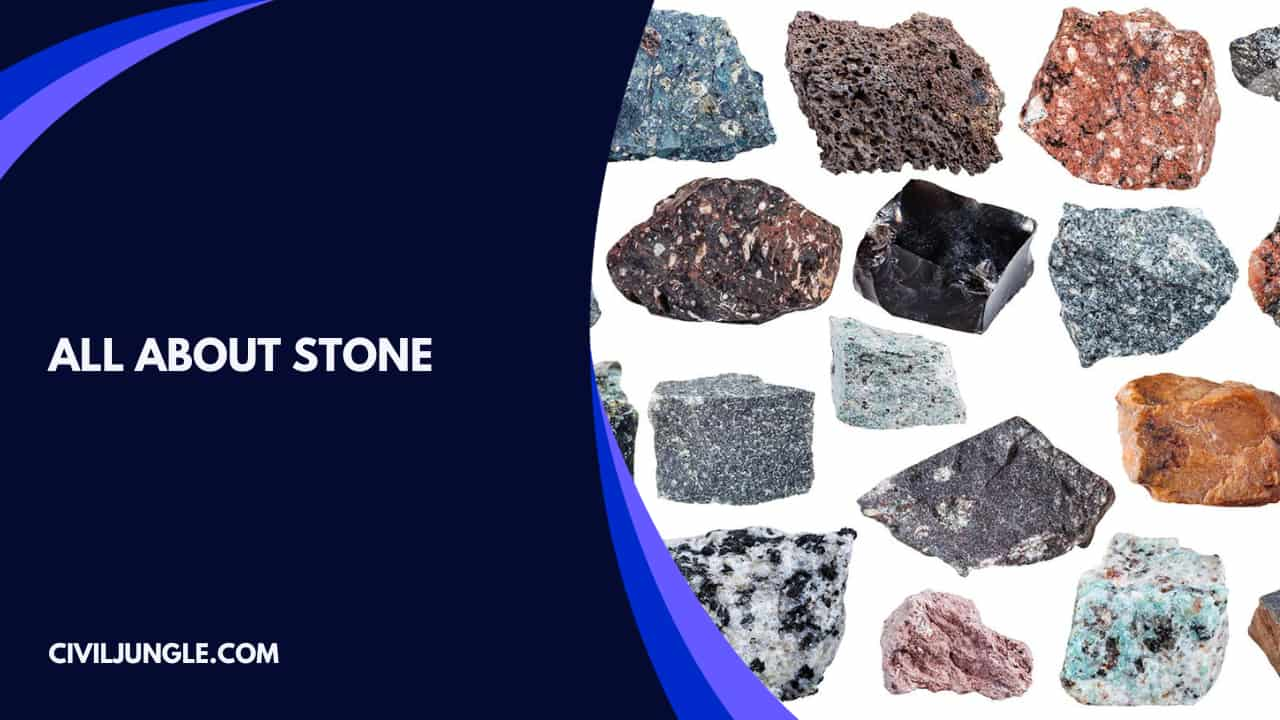
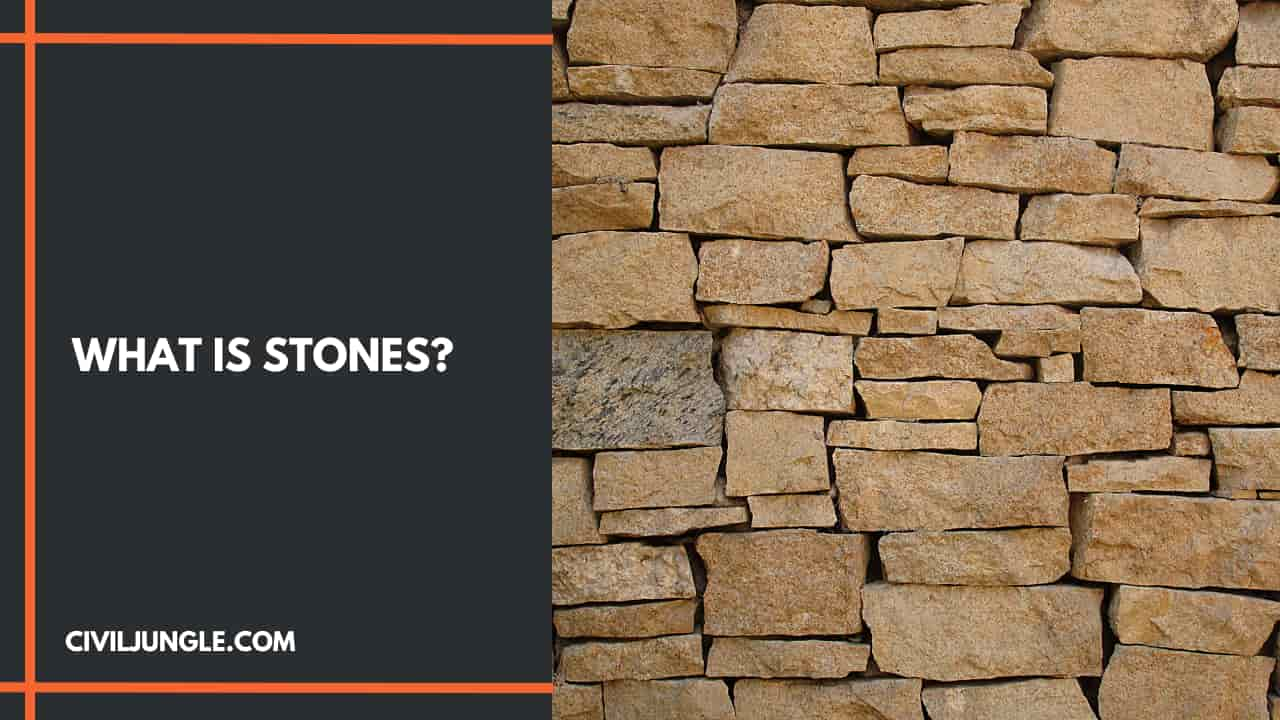
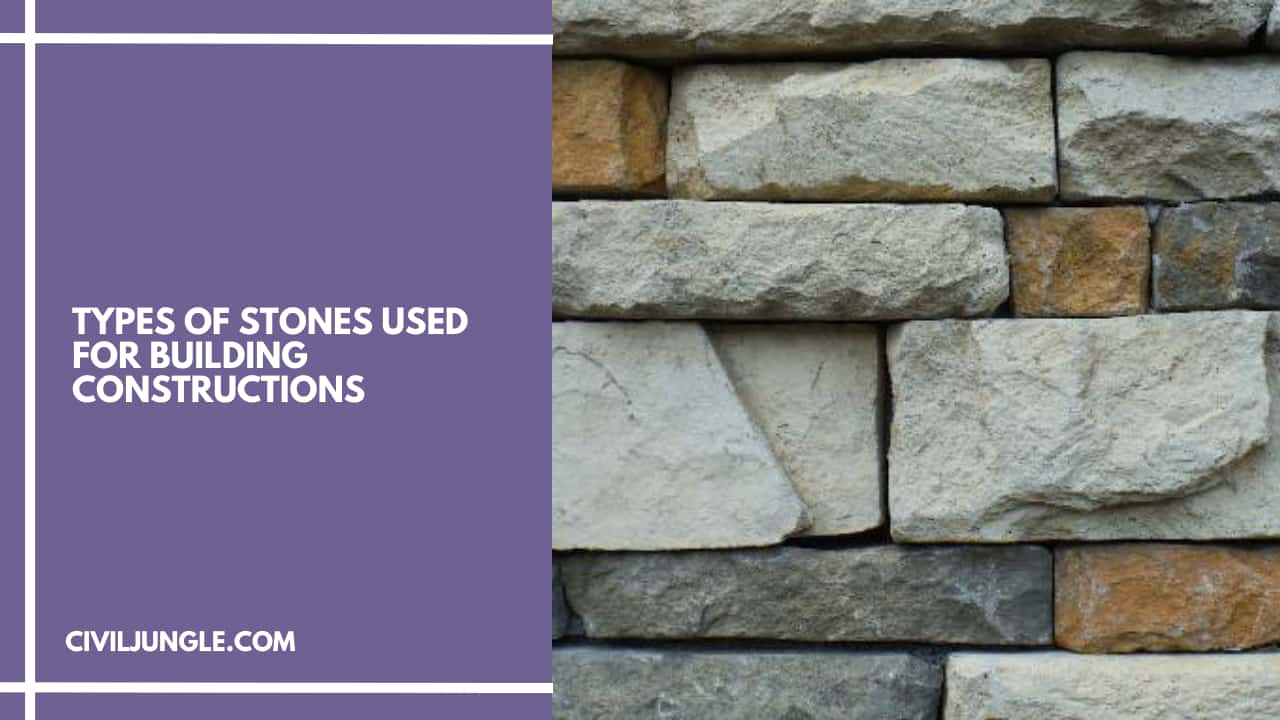
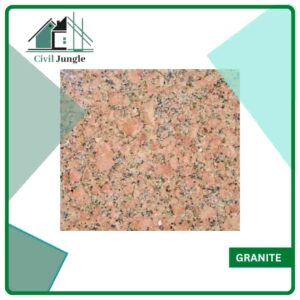
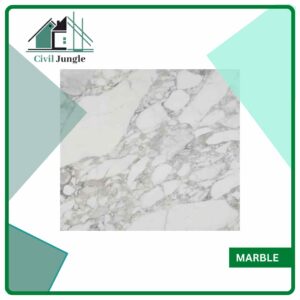
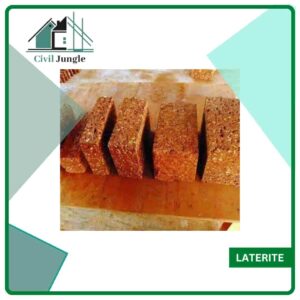
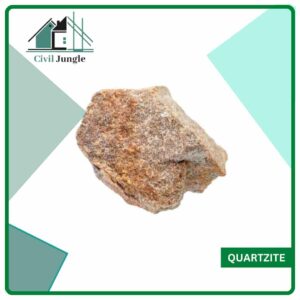
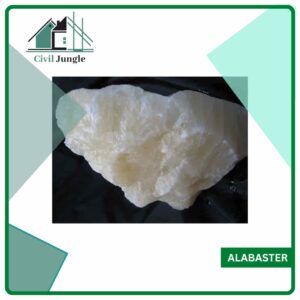
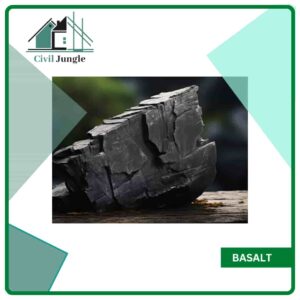
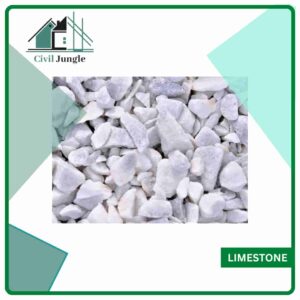
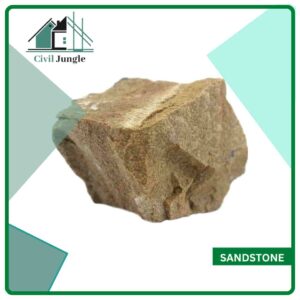
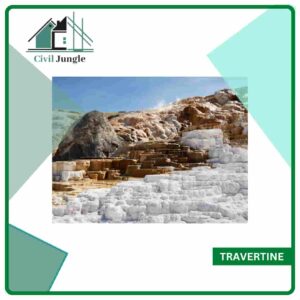
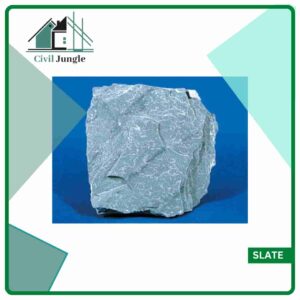
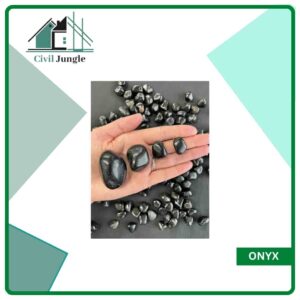

Leave a Reply